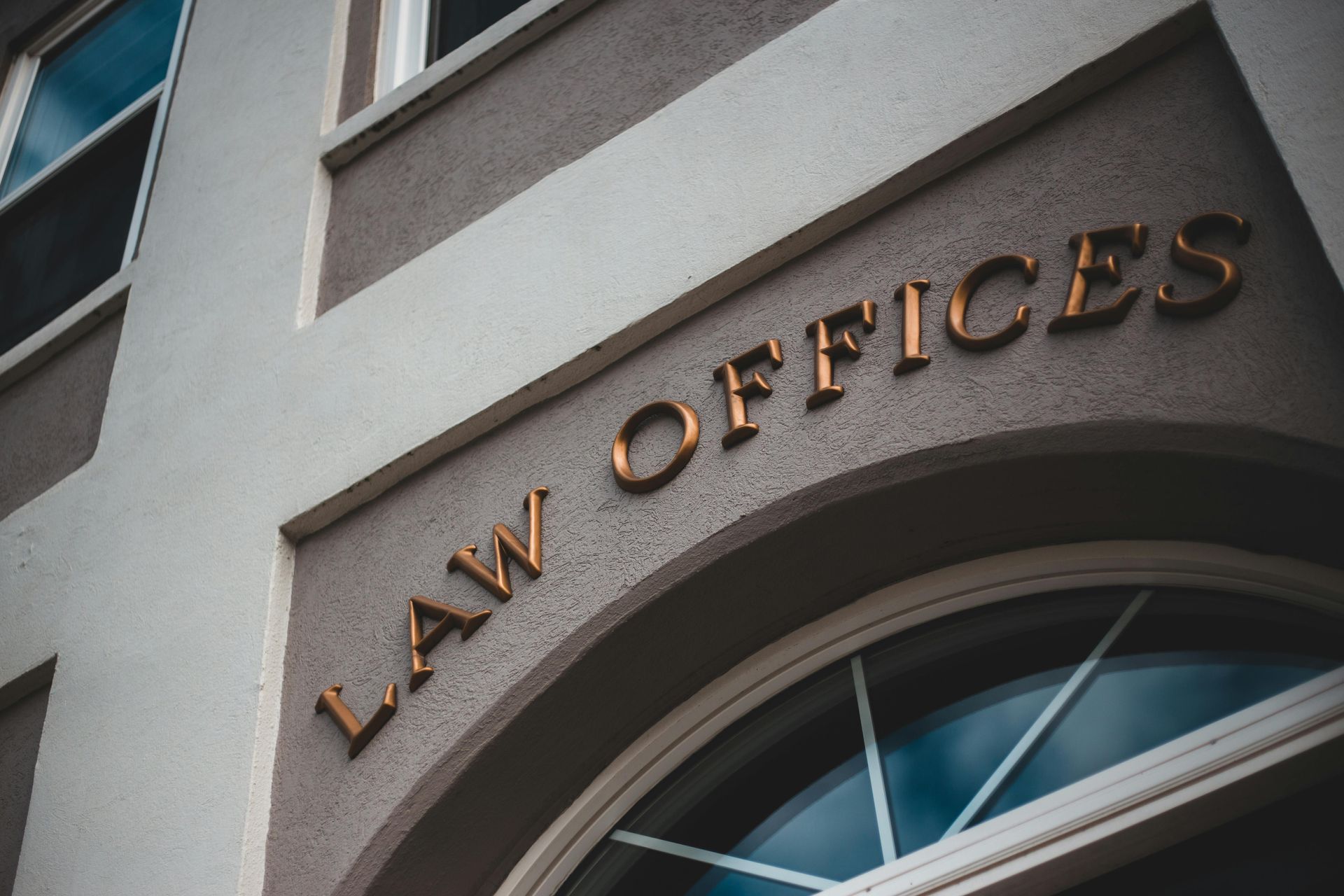Five Years of Use Can Demonstrate a Mark's Distinctiveness
ATTORNEYS IN DALLAS
Discover how to overcome refusals for descriptive marks by demonstrating five years of commercial use.
Five Years of Use Can Demonstrate a Mark's Distinctiveness
If a mark lacks inherent distinctiveness, it might be possible to overcome a refusal for being descriptive under by demonstrating five years of commercial use. If substantial evidence indicates that the mark is generic, a statement acknowledging its generic nature should be included along with the refusal for being merely descriptive. Examining Attorneys strategically assert refusals that are easier to prove, and as establishing a mark's generic status is challenging, descriptiveness refusals are often issued.
Marks that are considered merely descriptive can be registered on the Principal Register if sufficient evidence of acquired distinctiveness is presented. It's important to note that the type and amount of evidence required to establish acquired distinctiveness (secondary meaning) depends on the nature of the trademark, such as whether it is highly suggestive or highly descriptive, in relation to the goods and services. For instance, if the sought-after registration is for an ornamental product design, proving secondary meaning poses an exceptionally heavy burden.
In general, if the mark is a surname, a statement of five years of use is often sufficient to establish secondary meaning. Conversely, if the mark is highly descriptive or misdescriptive, the five-year statement would be considered inadequate. The USPTO frequently examines dictionary definitions and usage by competitors or third parties to determine if a mark has acquired distinctiveness. If the matter lacks inherent distinctiveness, five years of use will not be accepted as evidence. Examples include non-distinctive product designs, ornamentation, the color of a product, and sounds.
Five Year Period Does Not Have to Be Exclusive
The five-year period of use in commerce does not have to be exclusive, but it must be "substantially exclusive." This allows for some infringing or inconsequential uses. However, numerous third-party uses will weaken or invalidate the claim of acquired distinctiveness. Additionally, the use must be continuous without any periods of nonuse, and it must be "substantially continuous." Of course, there are exceptions. For instance, if the goods are seasonal, such as Christmas trees or certain fruits, the mark may still be able to establish acquired distinctiveness even if it is not used for eight months of the year. Furthermore, some marks may only claim acquired distinctiveness for a portion of the trademark.
Importance of Trademark Renewals
Trademarks can last forever with proper maintenance, use and enforcement. After the initial 5 year registration, tradeamarks must be renewed every 10 years thereafter along with continued proof of use in commerce. It is best to seek legal counsel as proper documents filed and fees paid with the U.S. Trademark Office will be needed.
Trademark Resources & Services
- Trademark Overview
- Trademark Registration
- Trademark Licensing
- Trademark Infringement
- Trademark Protection
- Trademark Coexistence
- Trademark Guidelines
- Trade Dress Protection
- Trademark Oppositions & Trademark Cancellations
- Cybersquatting
- UDRP Domain Name Proceedings
- Trademark Portfolio Management
Need any help?
Getting in touch is easy. Use the form below and request a free consultation today.
Industry Resources & Services
- Alcohol & Beverage Law
- Blockchain Law
- Cosmetics Product Law
- Crypto-currency Law
- Cyber-security Law
- Digital Marketing
- eCommerce Law
- Energy Law
- Fashion Industry Law
- Health Technology Law
- Oil & Gas Law
- Product Industry Overview
- Professional Services law
- Real Estate Development Law
- Restaurant Services Law
- Retail Business Law
- Software Industry Law
- Sporting Goods Law
- Technology Law
- Video Gaming Industry Law
Trademark Resources
- 66(a) Applications
- Abandoning a Trademark Application or Withdrawing a TTAB Proceeding
- Abandonment and Nonuse
- Abbreviations as Trademarks
- Accelerated Case Resolutions
- Acquired Secondary Trademark Meaning
- Amending Trademark Application
- Assigning a Trademark
- Assigning a Trademark and the Intent to Use Application
- Avoiding Fraud on Trademark Applications
- Avoiding Trademark Litigation
- Basis for Filing a Trademark
- Benefits of Registering a Trademark
- Bona Fide Intent to Use
- Celebrity Trademarks
- Challenging the Relatedness Factor
- Challenging Trademark Rights
- Claims in a Notice of Opposition
- Co-Existence Agreements
- Common Law Trademarks in the Internet Era
- Common Law Use and Priority
- Conflicting Marks
- Consent Agreements
- Constructive Use Priority
- Dates of Use
- Defenses in Opposition and Cancellation Proceedings
- Descriptive or Generic Trademarks
- Design Marks
- Design Trademarks
- Determining Trademark Similarities
- Discovery in TTAB Proceedings
- Dividing a Trademark Application
- Drawing Page
- Electronic Display Specimens for Trademarks
- Evidence in TTAB Proceedings
- Evidence of Acquired Distinctiveness
- Expediting Trademark Cancellation for Nonuse or Abandonment
- Extending Time to Oppose
- Factors of a Likelihood of Confusion Analysis
- False Suggestions of Connection
- Famous Trademarks and Likelihood of Confusion and Dilution
- Filing an Opposition or Cancellation Proceedings
- First Sale Doctrine
- Five Years of Use
- Foreign Trademark Rights
- Generic Trademarks
- Geographic Trademarks
- Hiring Trademark Counsel
- Immoral and Scandalous Trademarks
- Incontestability of U.S. Trademarks
- International Trademark Filings
- Joint Trademark Ownership
- Lawful Use of a Trademark in Commerce
- Likelihood of Confusion Analysis
- Likelihood of Confusion Refusal
- Merely Descriptive Trademarks
Trademark Resources
- Multiple Bases for a Trademark Application
- Overcoming and Ornamentation Trademark Refusal
- Personal Name Trademarks
- Principal and Supplemental Registers
- Protecting Single Creative Works
- Recording Trademark Assignments
- Refusal of a Trademark
- Refusing a Trade Dress Application
- Registering a Certification Trademark
- Registering a Service Mark
- Registering a Trademark That Lacks Inherent Distinctiveness
- Registering an International Trademark
- Relatedness of Goods or Services
- Request for Reconsideration in Trademark Office Action
- Requirements for International Trademark Application
- Revive an Abandoned Trademark Application
- Secondary Meaning
- Source Confusion
- Special Trademark Applications
- Standard Character and Special Format Marks
- Standing in Opposition and Cancellation Proceedings
- State Trademark Registration
- Statement of Use Extensions
- Tacking Doctrine
- Technical Trademark Use
- The Supplemental Register
- Trade Dress
- Trade Dress Application
- Trademark Application
- Trademark Clearance Searches
- Trademark Disclaimers
- Trademark Licensing
- Trademark of Authors, Performing Artists, and Characters
- Trademark Ownership
- Trademark Protection In Texas
- Trademark Settlements
- Trademark Specimens
- Trademark Specimens
- Trademark Use by Related Company
- Trademark Use in Advertising
- Trademark Use in Commerce
- Trademarking a Distinctive Mark
- Trademarking a Hashtag
- Trademarks for Musical Artists
- TTAB Discovery Rules
- TTAB Proceedings
- U.S. Service Mark
- U.S. Trade Dress
- Understanding Trade Channels
- Unitary U.S. Trademark
- Universal Symbols as Trademarks
- Using Secondary Sources
- What is an Ex Parte Appeal?
- Where to Register a Trademark
- Who Must File a Trademark?
Contact an Experienced Trademark Attorney
If you need legal advice regarding your trademark rights, assistance with trademark prosecution, or representation in a domain name dispute, contact Wilson Whitaker Rynell. Our team of trademark lawyers has extensive experience in all aspects of trademark and copyright law, including the filing of trademark applications and representing clients in defense or prosecution before the Trademark Trial and Appeal Board.
CLIENT MATTERS
5,000+
YEARS OF SERVICE
25+
Award Winning
Recognized in the legal industry as dedicated board-certified lawyers and Rising Stars.
Expert Team
Your project will be handled by legal experts every time. You will have the most experienced attorneys working for you.
Quality Representation

Let's talk about your legal issue
Wilson Legal Group P.C.
d/b/a Wilson Whitaker Rynell
(972) 248-8080 (Dallas) MAIN OFFICE
(713) 830-2207 (Houston) Appointment Only
(512) 691-4100 (Austin) Appointment Only
For more information on how we can assist in your intellectual property, commercial litigation, divorce, or other personal needs, let us know how we can help you:
How Can We Help You?
WILSON WHITAKER RYNELL
Thank You for Contacting Us!
Your information has been sent, and we will contact you shorlty...issues.
WILSON WHITAKER RYNELL
Oops, there was an error sending your message.
Please try again later.
Disclaimer:
This form does not establish an attorney-client relationship, and should only be used to contact the firm about scheduling a call or meeting. No confidential or sensitive information should be sent using this form.
We represent clients nationwide, including Dallas, Austin, Houston, and other Texas areas such as Fort Worth, Arlington, Carrollton, Plano, Allen, Lewisville, Flower Mound, Irving, Denton, McKinney, North Richland Hills, and all cities within Dallas County, Tarrant County, Collin County, and Denton County.
OFFICES
ABOUT
CONTACT
BLOG
Wilson Whitaker Rynell
16610 Dallas Parkway, Suite 1000
Dallas, Texas 75248
972-248-8080 (MAIN)
972-248-8088 (FAX)
info@wrrlegal.com (E-MAIL)










